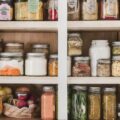Stocking Your Pantry with Fiber-Rich Goodness
Welcome to your guide to creating a nourishing, fiber-filled pantry! By focusing on high-fiber staples, we can support our digestive health, boost our energy, and cultivate a sense of wellbeing that radiates from the inside out. Let’s explore some wonderful pantry essentials that not only provide ample fiber but also offer versatility and delicious flavor to our everyday meals.
The Power of Whole Grains
Whole grains are the cornerstone of a high-fiber pantry. These nutritional powerhouses offer not just fiber, but a host of vitamins, minerals, and plant-based proteins. Some excellent options to keep on hand include:
- Brown rice
- Quinoa
- Oats
- Barley
- Whole wheat pasta
These grains can form the base of countless meals, from comforting breakfast porridges to hearty dinner grain bowls. By choosing whole grains, we’re not just nourishing our bodies—we’re also embracing foods that have been cherished by cultures around the world for millennia.
Legumes: Small but Mighty
Legumes are true nutritional heroes, packed with both soluble and insoluble fiber. They’re also rich in protein, making them an excellent choice for plant-based meals. Stock your pantry with a variety of dried or canned legumes such as:
- Lentils (red, green, and brown)
- Chickpeas
- Black beans
- Kidney beans
- Split peas
These versatile legumes can be transformed into creamy soups, zesty salads, or hearty stews. They’re not just good for us—they’re also kind to the planet, requiring fewer resources to grow than many other protein sources.
Nuts and Seeds for Crunch and Nutrition
Nuts and seeds are small packages of fiber, healthy fats, and proteins. They add a delightful crunch to meals and make for satisfying snacks. Consider stocking:
- Almonds
- Walnuts
- Chia seeds
- Flaxseeds
- Pumpkin seeds
Sprinkle these over your morning yogurt, blend them into smoothies, or use them to add texture to baked goods. Remember, a little goes a long way—these nutrient-dense foods are best enjoyed in moderation as part of a balanced diet.
Dried Fruits: Nature’s Candy
While fresh fruits are wonderful, dried fruits offer a convenient, shelf-stable option that’s rich in fiber. Some great choices include:
- Prunes
- Figs
- Dates
- Apricots
- Raisins
These sweet treats can be enjoyed on their own, added to breakfast cereals, or incorporated into baked goods for natural sweetness. They’re also fantastic in savory dishes, adding depth and complexity to stews and tagines.
Fiber-Rich Pantry Staples for Baking
For those who love to bake, there are many fiber-rich ingredients that can elevate your creations. Consider stocking:
- Whole wheat flour
- Almond flour
- Coconut flour
- Psyllium husk
- Ground flaxseed
These ingredients can be used to create delicious, fiber-rich breads, muffins, and cookies. By incorporating these into our baking, we can transform treats into nourishing snacks that support our health goals.
Frequently Asked Questions
1. How much fiber should I aim to eat each day?
The general recommendation is to consume 25-30 grams of fiber per day for adults. However, it’s best to increase your fiber intake gradually and drink plenty of water to avoid digestive discomfort.
2. Can I get enough fiber from supplements alone?
While fiber supplements can be helpful, it’s best to get your fiber from whole foods whenever possible. Whole foods provide not just fiber, but a range of other nutrients and health benefits.
3. Are there any risks to eating a high-fiber diet?
For most people, a high-fiber diet is very beneficial. However, if you have certain digestive conditions, it’s important to consult with a healthcare provider before significantly increasing your fiber intake.
4. How can I incorporate more high-fiber foods into my diet?
Start by making small changes, like swapping white rice for brown rice, or adding a handful of beans to your salad. Gradually increase your intake of whole grains, legumes, fruits, and vegetables.
5. Does cooking affect the fiber content of foods?
Cooking methods can slightly affect fiber content, but not significantly. In fact, cooking can make some high-fiber foods easier to digest. The most important thing is to eat a variety of fiber-rich foods, both raw and cooked.
Remember, building a high-fiber pantry is not just about nutrition—it’s about creating a foundation for meals that nourish both body and soul. Each time we reach for these fiber-rich staples, we’re making a choice that supports our health and the health of our planet. Here’s to happy, healthy eating!









